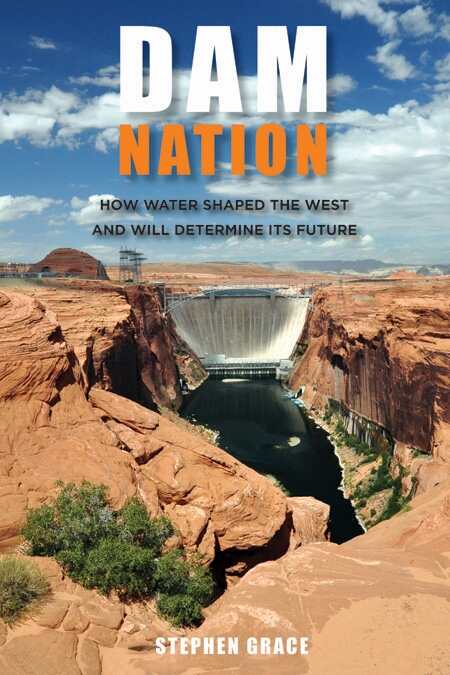
Dam Nation
How Water Shaped the West and Will Determine Its Future
No one reading this book will ever look at a glass of water the same way again—especially if they live in the West.
Water determined how the West was settled and populated and, as the author graphically chronicles, will influence how this massive western third of the United States will be challenged in the future. As the mountain snowpack diminishes, thriving cities and communities must prudently reassess their water needs and practices and control their own supplies, especially those in sun belt states and arid zones.
Stephen Grace presents an engaging, easily palatable crash course in the complex history of water in the West. Many factors are at work—politics, railroads, agriculture, city-building, mining, recreation, and the energy industry—making water rights a complex issue as the rivers flow southward.
Beginning at roughly a vertical line bisecting the Dakotas and Kansas, the West encompasses the Rockies, the Great Plains, and expansive deserts. These areas, quickly becoming the most sought-after lands for their beauty, cultural amenities, and recreation potential, are taxing the available rivers, lakes, and aquifers. Accepted practices that once contributed to the settling of the West, such as damming major waterways, like the Colorado River, garner controversy today, creating tense conflicts. “For an increasingly large segment of the American public, dams have come to symbolize misplaced faith in harnessing natural resources,” writes Grace. “The great faces of concrete now evoke an era of engineering excess, when the nation’s wild bounty … was ravaged in the name of progress and replaced with factory farms and shopping malls.”
As a Colorado resident intimately familiar with the watersheds of the West, the author has seen firsthand the dynamics of American river usage and its impact, pro and con, on the entire nation’s environmental and business health.
The simple pleasures of taking a shower or consuming a hamburger are all intricately linked to the availability of water. The thousands of gallons of water needed to produce one pound of beef must come from somewhere, the author reminds us. “Start adding up the water used for meals and you get the picture—it takes high-rise dams and giant pipelines to grow your dinner in the West.”
The text is thoroughly researched and documented with a by-chapter listing of recommended source materials running forty-four pages. But the book doesn’t preach and is not a dry, academic tome. The author encourages readers to use his text not as the final voice, but as a springboard to their own paths of awareness—and to appreciating this life-sustaining resource.
Reviewed by
Karl Kunkel
Disclosure: This article is not an endorsement, but a review. The publisher of this book provided free copies of the book to have their book reviewed by a professional reviewer. No fee was paid by the publisher for this review. Foreword Reviews only recommends books that we love. Foreword Magazine, Inc. is disclosing this in accordance with the Federal Trade Commission’s 16 CFR, Part 255.
